My suggestion: fried rice with ramps and sorrel next to roasted salmon with key lime and pineapple sage gremolata. This was a late (11 PM-ish) dinner at the end of a tiring and hungry-making day and it really hit the spot. I wanted nothing more / nothing less than a pile of protein and carbs and this was an appealingly fast and easy pile to make. Better still, the bright, citrusy flavors made it all feel light and vibrant and a bit celebratory, which was particularly welcome considering that the friend who came over to have a late dinner with me had just bought a very cool Vespa and couldn't wait to zip around on it.
new (used)!
I hope it doesn't seem high-handed to suggest throwing sorrel into your fried rice. I love its tart flavor and would be happy to encounter it anywhere and everywhere while it's in season, but it can be frighteningly expensive to buy (and maddening to find) if you don't grow it yourself. Having never grown it myself, I've never felt that I've been able to eat my fill of it. In NYC this year it's about $10/pound. I tend to buy a little bag or box of it whenever I see it and just use it however I see fit rather than coming home with a mound of it and looking for a recipe for $40 sorrel soup or whatever.
You need to have cold rice to make the fried rice with. Everyone says so. Here, for example. I've never bothered trying to make it with freshly-cooked rice so I can't be contrarian. It makes sense, anyhow, that the texture would be all wrong that way, that the rice would end up overcooked rather than heated through.
Neither of these recipes depend on precision, which is good because you probably don't just happen to have a pineapple sage plant in need of a haircut. It feels a bit wrong even calling them "recipes" because both were incredibly simple and straightforward to prepare. They're more assemblages. Use them as guidelines and let me know how it goes if you try something(s) else. Both serve two people.
fried rice with ramps and sorrel
peanut oil
a bundle of ramps, sliced into ribbons — keep the bulb-ends and the green parts in separate piles for cooking
a good handful or two of sorrel, sliced into ribbons (hopefully around 1 cup)
1 egg, beaten
enough cold cooked long-grain rice to feed you and your friend
salt, pepper, soy sauce
Heat a couple tablespoons of oil in a wok or heavy skillet over medium-high heat and sauté the bulb ends of the ramps until they start to soften. Add the green parts and cook for another minute or two. Add the rice and give it a good stir, making sure it's evenly coated with oil. Let it cook for a few minutes, stirring every so often. When the rice seems to be heated through and you're just about ready to eat, stir in the sorrel — it will wilt right away — and push the rice to the edges of the pan, clearing a space in the middle to cook your egg. Add a bit more oil if desired, and quickly cook the egg while stirring to break it up. Stir the rice over it, stir a few dashes of soy sauce into the rice, and stir everything some more to combine all the ingredients. Serve right away while nice and hot.
roasted salmon with key lime and pineapple sage gremolata
Note: Do not substitute regular sage for the pineapple sage because it has a completely different flavor and strength. If you need a substitute try a mixture of parsley and thyme instead (and omit the additional thyme).
2 salmon fillets
5 or 6 key limes (or 2 regular limes)
2 to 3 tablespoons fresh pineapple sage leaves, sliced into ribbons
2 to 3 teaspoons thyme leaves
2 cloves garlic, finely minced
olive oil, salt and pepper
An hour or so before you want to eat, pat the salmon dry, season it with salt and fresh ground pepper, and zest a key lime over each piece. (The zest of one regular lime over both pieces should be plenty if that's what you're using).
When you're ready to eat, take the salmon out of the refrigerator and let it come down in temperature while you heat the oven to 425°F.
While the oven is heating, zest and juice your remaining key limes over a bowl. (Use the juice from the two you denuded earlier). Stir in a couple tablespoons of olive oil, the garlic, the herbs, and a bit of salt and pepper to taste. Don't worry about it not emulsifying because you're making a gremolata rather than a vinaigrette. Which means that as soon as it tastes good, you're done and can set it aside.
Roast the fish on a lightly oiled baking sheet according to the ten-minutes-per-inch-of-thickness rule. When it's done, spoon the gremolata on top.
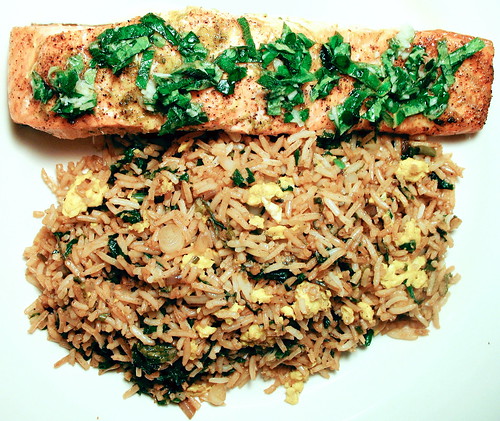

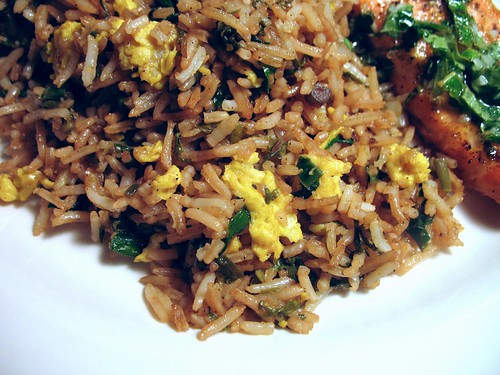




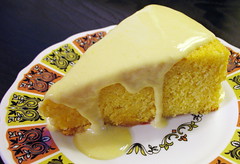
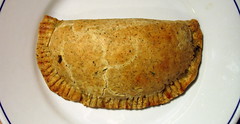


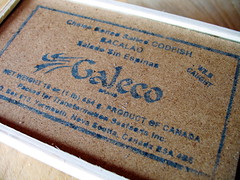







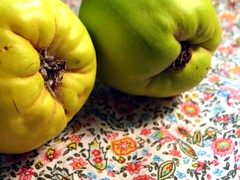
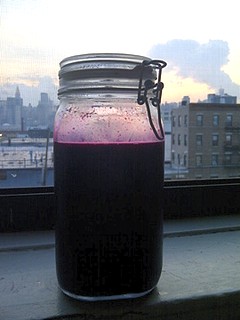
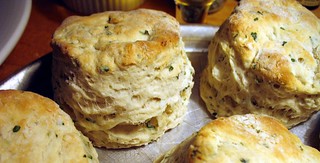
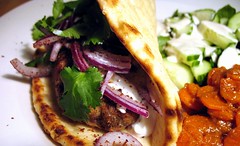
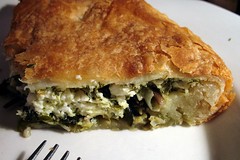


No comments:
Post a Comment